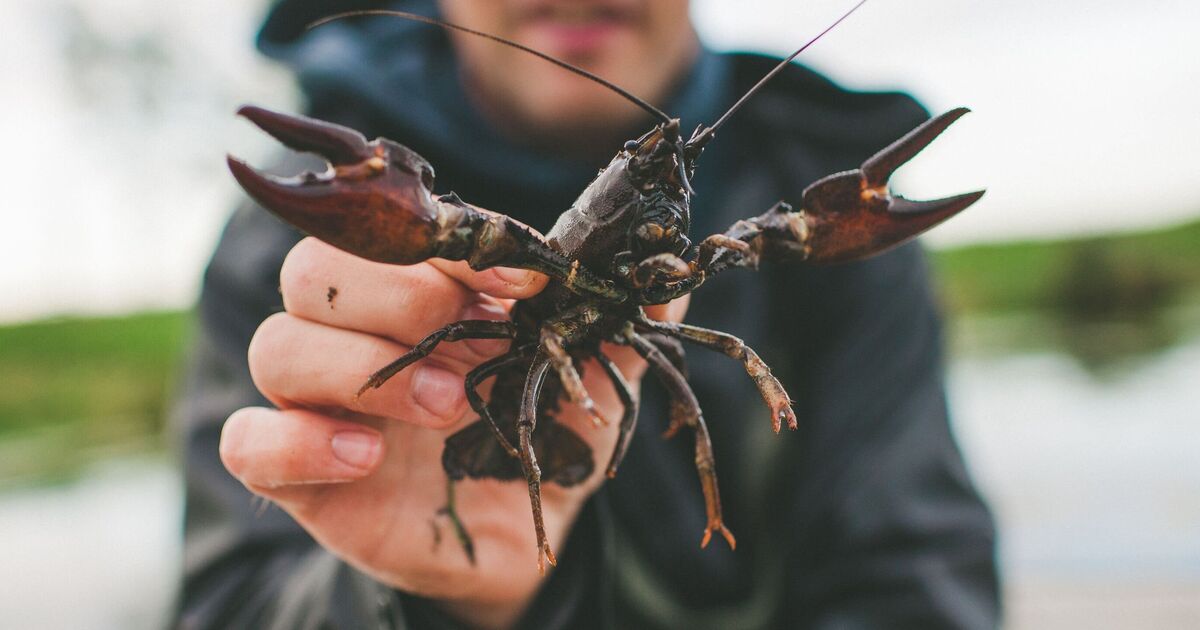American invader crayfish are clawing its UK cousins out of the way and putting them at risk of extinction.
Signal crayfish – otherwise known as Pacifastacus leniusculus – were introduced from the US in the 1970s to be reared in farms for restaurants and food shops.
This species quickly became established in the wild, with accidental and intentional releases helping them to spread throughout British rivers and streams.
But in addition to extensive burrowing eroding river banks, they pose a grave threat to native wildlife – including Britain’s only native crayfish species, the white-clawed crayfish (Austropotamobius pallipes).
This is because American crayfish carry a disease known as crayfish plague which kills the native white-clawed if contracted – so much so that the UK species is now vulnerable to extinction. Over the past 20 years, their population has dropped dramatically by up to 80 percent.
The signal crayfish is much larger than the white-clawed crayfish. Males grow up to 16cm long and females grow up to 12cm long. In comparison, the white-clawed crayfish typically grows to between 6cm and 8cm.
Now conservation efforts are underway.
Crayfish in Birmingham are being checked in to the “Riverbed and Breakfast” – a brand new licenced hatchery thanks to SEA LIFE Birmingham’s animal care team.
The team regularly supports local conservation groups with their crayfish surveys to monitor and protect white-claw crayfish. When invaders are detected nearby these organisations spring into action and translocate at-risk crayfish to ‘ark sites’ – specially prepared safe havens free from signal crayfish.
The River B&B also acts as a breeding ground where females can be brought in from the wild to allow them to hatch hundreds of babies in predator-free conditions, ensuring the next generation has the best chance of survival. Once the babies reach a set size, they are released back into a safe site and allowed to thrive back in the wild.
Jonny Rudd, National SEA LIFE Centre Birmingham’s curator, said: “Our team is working incredibly hard alongside our local partners to maintain and, in time, hopefully increase white-clawed crayfish populations across the Midlands.
“Here in Birmingham, our licensed hatchery, affectionately known as the Riverbed and Breakfast, offers UK crayfish a safe haven from the deadly plague carried by signal crayfish.
“On top of providing support to local groups our assisted breeding programme, National SEA LIFE Centre Birmingham is also home to a public engagement exhibit, which aims to educate the public about the threats to white-clawed crayfish and how they can help.
“The exhibit is home to our resident crayfish allowing our guests to meet one of our most illusive yet endangered freshwater residents and learn how they can help protect them.
“We invite everyone to dive into our conservation efforts, learn more about crayfish and develop an understanding of how we can help our native animals survive in UK waters.”
For further information visit the National SEA LIFE Centre Birmingham website.











